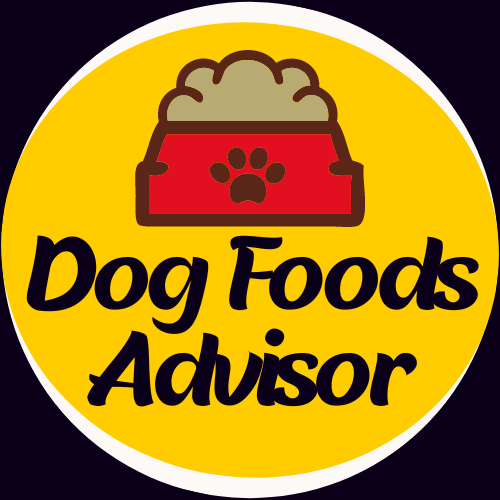Understanding the unique nutritional needs of different dog breeds
As pet parents, we want the best for our furry friends. And when it comes to their nutrition, we know that one size does not fit all – especially when it comes to different breeds of dogs. From small lapdogs to working-class canines and everything in between, each breed has unique nutritional needs that require specialized attention.
We’ll explore these individual requirements and help you understand how to give your four-legged companion a balanced diet tailored specifically to their breed’s needs. So are you ready? Let’s dive into the world of doggie dining!
Table of Contents
- Why are different dog breeds different in terms of their nutritional needs?
- What are the top five nutritional needs of each dog breed?
- How can you meet the nutritional needs of your specific dog breed?
- What foods are best for each type of dog breed?
- Tips for feeding your dog on a restricted diet
Why are different dog breeds different in terms of their nutritional needs?
There is a large variety of dog breeds, both in terms of size and shape. This means that there are also a wide range of nutritional needs. While all dog breeds require some level of food, some breeds have more specific nutritional requirements than others.
Breeds like Bulldogs and Dobermans, for example, have a high requirement for protein. This is because these dogs are built to withstand lots of physical activity and need enough protein to help repair damaged muscles. Other breeds like Corgis and Welsh Cobs also require a lot of protein, but they also need plenty of other nutrients to keep them healthy.
Some dog breeds, like Beagles and Shih Tzus, don’t have as high a protein requirement as other breeds but they still need certain nutrients. Beagles, for example, are known for their hunting skills so they need lots of vitamins and minerals to support those activities.
What are the top five nutritional needs of each dog breed?
Each dog has a different set of nutritional needs that must be taken into consideration when feeding them. This is especially important when considering the various dog breeds, as their caloric needs, protein requirements, and other nutrients can vary significantly.
- Puppies: Puppies need lots of energy to grow and thrive. They also require four times as much protein as an adult dog and three times as much calcium.
- Dogs of all ages: Dogs require a mix of proteins, carbs, and fiber to maintain their health and performance-wise. Older dogs might require more protein than younger dogs, for example, since their muscles may start to break down and they tend to lose weight faster. Consistent food intake is key in keeping your pup healthy throughout their lifetime!
- Breeds with short hair: Short hair breeds like Shih Tzus lack many important minerals like zinc and copper, so they need supplements added to their diet specifically designed for short haired dogs. Breeds with long hair like Corgis will actually turn bluish if not getting enough water or Electrolytes (which include chlorine), so keep track of how much your pet drinks on average each day!
- Sensitive stomachs: Some breeds are particularly susceptible to particular foods or allergies that can cause digestive upsets or even sickness. If you’re unsure about what might be causing your pet’s problems, it’s best to consult a vet about the necessary changes in their diet.
How can you meet the nutritional needs of your specific dog breed?
One of the most important things you can do to ensure that your dog is getting the nutrients he or she needs is to pay close attention to the breed’s specific nutritional needs. To help you understand these needs, here are seven of the most common dog breeds and what their diet should look like:
- Poodle: A poodle’s diet should consist mostly of fish, low-fat meat, and plenty of fresh vegetables and fruits.
- Schnauzer: Schnauzers need a high-quality grain such as wheat, oats, or barley in their diet. They should also receive plenty of protein and essential vitamins and minerals.
- Boston Terrier: Boston Terriers require moderate amounts of both protein and carbs in their diet. Their ideal food includes some type of meat, some type of grain (such as oatmeal), as well as moderate levels of water and healthy fats.
- German Shephard: German Shepherds require a diet high in fiber to avoid any issues with bloat or other gastrointestinal issues. The ideal food for these dogs includes plenty of hay, low-fat meat, nuts, seeds, and fresh vegetables.
- Golden Retriever: A Golden Retriever’s diet should include approximately 25% protein to stave off any weight problems while maintaining muscle mass. Other key ingredients include moderate levels of carbs (including fibers) and lots of water. Heartworm prevention is crucial for all dogs but especially those living in endemic areas – read more about heartworm prevention for dogs.
- Labrador Retriever: A Lab’s diet should consist of about 30% protein to maintain muscle mass and prevent any weight problems. The remainder of the diet can be composed of carbs, fats, and fibers. Labrador Retrievers require plenty of water to stay hydrated and healthy.
- Dalmatian: Dalmatians need a high-quality grain such as wheat, oats, or barley in their diet to ensure proper dental health and ward off any potential food allergies. Along with these grains, Dalmatians should receive moderate amounts of proteins (including fish) and essential vitamins and minerals.
What foods are best for each type of dog breed?
There are many foods that are typically considered best for each type of dog, but not all of them are necessarily healthy for each breed. In general, most dog foods should be high in protein and low in carbohydrates. However, some breeds have specific nutritional needs, so the food you choose for your pet may need to be adjusted.
- Pitbulls, Dobermans, and Rottweilers: These three breeds tend to have a high need for protein. They should eat meat products such as chicken or beef regularly, along with supplements such as pre-biotics or probiotics.
- Maltese puppies: Malteses require a high level of dietary fiber in order to avoid developing intestinal problems later on in life. They should receive at least 25 percent of their daily calories from fiber-rich sources such as fruits, vegetables, legumes, and whole grains.
- German Shepherds: German Shepherds are also known for having a high fiber requirement. They should get about 35 percent of their daily calories from fiber-rich sources like fruits and vegetables. Additionally, they should consume moderate amounts of water and keep their activity levels up so they don’t become overweight or obese.
Tips for feeding your dog on a restricted diet
According to the Benevolent Dog Foundation, there are eleven different dog breeds that require unique nutritional needs due to their SPECIFIC dog breed phenotype.
Some of the specific nutritional needs of some dog breeds include:
- Akita: high in fat – needed for insulation and to keep them happy and healthy.
- Beagle: low in protein – needed because they have a propensity for getting kidney problems if their diet is too high in protein.
- Bloodhound: high in vitamin B12 – needed to prevent abnormal thumping heart rhythms.
- Border Collie: low in sodium – helps regulate water balance.
- Bulldog: medium-high in fiber – keeps them from getting Type II diabetes, helps with bowel movements and it also provides physical and emotional security.
- Dalmatian: medium-low in calcium – needed for strong teeth and bones, helps regulate blood sugar levels.
- German Shephard: low in copper – important for skin, nerve, blood formation and organ function.
- Golden Retriever: very high in omega-3 fatty acids – important for reducing inflammation and keeping your pup’s eyes healthy (especially during puppyhood).
- Ibizan Hound: very high in nickel – crucial for production of red blood cells, aiding cognitive function and preventing neurological diseases, such as Alzheimer’s Disease.
- Jack Russell Terrier: very low in Vitamin A – important for healthy skin and bone formation.
- Labrador Retriever: moderate in fiber – helps with regularity, reducing gastrointestinal problems and helping keep weight down.
- Maltese: moderate in omega-6 fatty acids – encourages a healthy coat, regulates blood sugar levels and helps prevent chronic diseases such as heart disease.
Experts suggest that if your dog is on a restricted diet, you should provide plenty of fresh water, exercise and toys to keep them entertained.
Conclusion
Dogs come in all shapes and sizes, with different nutritional needs. Knowing which type of food your dog is most likely to enjoy can make feeding them a lot less frustrating. In this article, we have highlighted four of the most common dog breeds and their dietary requirements. From there, it should be easy to find the right food for your pup!






